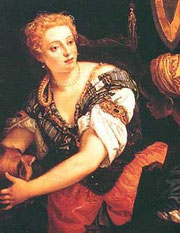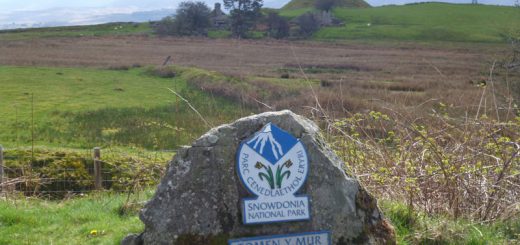Knights Templar and Devil Worship
While I believe the Knights Templar were a relatively orthodox military order, it seems to be the case that they allowed excommunicates and just about anyone able to fight into their ranks. I suspect this means that there were localised cells of heresy in the order.
While I believe the Knights Templar were a relatively orthodox military order, it seems to be the case that they allowed excommunicates and just about anyone able to fight into their ranks. I suspect this means that there were localised cells of heresy in the order.
One interesting case involved possible devil worship in York, at least according to two Franciscans under oath! A Templar priest was claimed to have evoked the devil facing west with his back to the altar, while other Templars confessed that some of their brethren denied and defiled the cross. A notary from York also claimed that he’d been told the Templars revered a horned idol in the form of a calf. And all his in the transcripts of the English Templar trials, which didn’t appear to involve any torture or coersion at all.
All of which is interesting when we realise the term Baphomet, originally a term for Mohammed, seems to have evolved into a term for the devil, which explains the use of the term in various contexts.
All of this and more comes from the research I’m doing for my latest book Temple Garden (a follow up to Black Knights book). More can be found on my Templar research forum at
http://thelema.l.makeforum.org/forum/
I can post more material here for those interested.




Templars
I’ve always had a keen interest in Templar related material Steve, so feel free post more if you want.
There were a lot of political reasons that could be behind the persecution of the Templars which seem to originate with the ambitions of the French King Philip.
I was under the impression that the English took a rather less than enthusiastic approach to rounding up Templar heretics as they good realtions with the English royalty. Do you think that the above confessions could be the result of the English having to show they were actually doing something about routing devil worshippers within the Templars. Afterall, if they were really believed wouldn’t England have come down harder on the Templars?
“Without torture” was a very
"Without torture" was a very cloudy phrase used in interrogation reports.
If I remember correctly since King John’s time prisoners in England could only be tortured under a Royal Charter so interrogators grew cunning. It is well known that Matthew Hopkins, the infamous "Witchfinder General", employed unorthodox and cruel methods which allowed him to extort confessions. I’ll remember interrogations going on to days to an end, without the prisoner being allowed to sleep, and prisoners tied to a chair in a completely barren room for many days, being given no food and just enough water to stay alive. Under contemporary law this was not regarded as torture.
Another favored method was torturing a poor fellow to death while the accused was forced to watch.
One final method, very popular on the Continent and in the Holy Roman Empire particulary, was to go "easy" on the accused. Even if the methods employed were simply fearful this was nothing compared to what the interrogators could have done.
It must also be understood that from the early XIV century, starting in France, it became increasingly popular to accuse one’s political rivals of withcraft and congressus cun daemonibus to get rid of them.
The first illustrious victims of this "fashion" were no less than to two popes, Boniface VIII and Benedict XI, who were posthumously accused by Philip IV the Fair of being sorcerers in league with the Devil. Both popes had been Philip’s implacable enemies and the king of France wanted to force the weak Clement V into overturning some of their decisions.
The Knight Templars were eliminated pretty much in the same way, simply because he owed the order large sums of money and he was desperately short on cash to fund his military adventures: a little known fact is that both the Jews and the Lombards living in his domains had been expelled and their properties were confiscated by Philip’s agents.
It is well known that Philip had coveted the rich properties of the Gallic church for many years but his plan were always thwarted by the energetic and indomitable Boniface and his shortlived successor, Benedict. Once the weak Clement (which many have accused, not without reason, of being a mere French agent) was installed the king had no problems in having his decisions rubberstamped: technically the act of arresting the Templars was punishable with excommunication (Philip had already excommunicated by Boniface), since the Knights only answered to the Pope himself, but Clement bowed down to pressure and refused to act.
To be completely honest a number of abbots and bishops (all holding great properties) had been condemned for witchcraft and other assorted crimes before the Knight Templars, so the order had pretty much an idea of what was coming their way.
I think you’re both right
I think you’re both right there, the French King certainly was motivated by a lust for power and money, though its uncertain how rich the Templars were then, some say they had already loaned all their money and were all but bankrupted after the end of the Crusades, thus refuting Templar treasure myths (apparently selling icons to make money, and probably having less than 20 ‘fingers of Christ’ left!). So Phillip’s motive may have been more escape from debt and the removal of a rival power block in this case. Phillip’s advisor was also a bit of a religious fanatic too it seems and really believed there was evil everywhere. But yes demonic accusations were the smears of the age, though that doesnt mean that there werent devil worshippers. There are certainly more recent cases of Catholic satanists being ex priests, so presumably things wouldnt have been any better then. I think contrary to most academics complex explanations are more likely than simple ones. There’s also some stories in circulation that the Templars in their home turf of Burgandy were tipped off and many escaped. Oddly a French Templar, de Blanke, turns up at the English trials on 1309, two years after the arrests in France.
The torture point is correct too I think, they were kept in the Tower, so we don’t know how they were treated there, but in the trials it seems they were just trotted in and interviewed by French inquisitors within English chapels (with English representitives just keeping an eye on things). Though oddly nothing much comes from the Templars, more comes from the prosecution witnesses (perhaps biased, but unlikely to be cajoled) which makes it more suspect, though the devil claims came from two independent accounts from Franciscans under oath, apparently from confessionals, so has to be taken seriously. Perhaps they had reasons to lie, but the Franciscans were known for their liberality and honesty usually so I think theres something there.
However, that most Templars were innocent is indicated by the fact some died in prison rather than confess, even when the English told them that ‘confession’ would not be seriously punished and they would be swiftly absolved. So most ‘confessed’ and were allowed to join other orders, after a mere slap on the wrist. This seems to indicate some Templars were pretty fanatical Catholics. But they were a Church within a Church that extended across a Continent, with much inter personnel exchanges, so no doubt were as diverse and eclectic as the broader Church.
Correct me if I’m wrong, but
Correct me if I’m wrong, but I seem to recall that the Templars did not have priests among their number and instead relied upon Catholic priests who were ‘affiliated’ to the order as the Templars were a religious order i.e. monks.
Might be wrong on that one though.
Well there were certainly
Well there were certainly Templar Priests in the Order (and according to orthodox history they would have all been Catholics) though the English trial testimony claims the knights also made regular confessions to outside Franciscans and Dominicans.
One of the theories for
One of the theories for the arrests was that Phillip and Pope Clement wanted to start their own crusade and reap the benefits of having capturing the Holy Land. For this purpose they needed the backing and strength of one of the knightly orders. The Templars probably had lost a lot of their wealth and no longer had a prescence near the Holy Land or in the Mediteranean. However, the The Hospitaliers still had either Rhodes or Malta at this point (cant quite remember which). So it has been suggested that the Templars were removed to help bolster the strength of the Hospitaliers and lead the way for a possible future crusade.
Thats sounds plausible.
Thats sounds plausible. There’s even a theory that Rene d’Anjou as late as the 15th Cent(?) wanted to launch a new Crusade, and formed the Order of the Cresent with that aim, much to the horror of the Pope, who made sure that was not going to happen…
I didn’t know Baphomet was a
I didn’t know Baphomet was a name for Mohammed, which evolved into the devil. I thought it was the name of a pagan serpent-god like Cernnunos, often shown horned, part goat part man. The kind of figure which came into being as indo-europeans met with earlier shamanistc cultures in Europe and their dancing goat men images changed into lotus positioned ones. It’s a figure seen in one of the distinct phases of hallucinogenic trance. It was deliberatly portayed as the devil in later times to get people away from paganism.
Interestingly enough, as I
Interestingly enough, as I recall, in Ireland and Scotland, if they did face trial, most if not all the Templars were found not guilty. Remember that the persecution of the Templars was primarilly carried out in France, only after the papal bull were thier lands seized elsewhere,f ro the most part. Several clever kings made off with quite a bit of the Templars forces and chattals intact, particularly the Holy Roman Emperors and Dinius the Farmer of Portugal, who’s claim that the Templars were holding his property in trust and did not own anything in Portugal made for a long and difficult claiming process by the Hospitlars,
As far as the Templar fleet dissappearing, supposedly with a huge fortune aboard, I do not know about the wealth, but I would posit that the next port of call they made would have been Schull in Southern Ireland. It would have been the largest fortified port in a day or two sailing distance that was entirely held by known associates of the Templars at the time. Anything else is too risky or too far from Le Rochell.
Summum Nec Metuam Diem Nec Optima
Most knights templar that
Most knights templar that wanted to settle in Scotland were simply allowed to become Knight of St John and left alone.
The fact that many Templars
The fact that many Templars were well trained and experienced knights may have played a part in their relatively benign treatment in Scotland. The Kingdom had always been lamentably short on heavy horse and every lance was welcome, particulary during that period of strife with the Angevin kings of England.
Marshall Keith’s horse at Bannockburn is said to have contained a contingent of Templar knights but this has never substantiated and may be a later fabrication.
In Distortion We Trust
There were Templar Knights
There were Templar Knights on both sides.
Re: Knights Templar and Devil Worship
but weren’t the knights protecters of the holy grail?
if so only three were picked so the rest must have been angry that they were not don’t u think therefore the devil had a way in didn’t he if they were angry they were opening there minds to the devils ( also known as lucifer,ambross,asmoedus,beezle-budd and the witch) influence also a tablet was found that was attached to a stone tablet half of it had three knights and the grail the other had templar knights along with a horned creature wearing a robe standing on top of a font while it was on fire!
Re: Knights Templar and Devil Worship
The History Channel and National Geographic channel in the US has done dozens of pieces on the Templars…and I am sympathetic towards them. I’m even interested in Sinclair’s Tower in Narragansett Bay…it has all the hall marks of a Templar church…although its been called a flour mill by others.
Along these same lines…Oak Island in Canada has something called the Money Pit and these is some thought it could hide the lost Templar Treasure.
I’ve even pondered the idea that the Narragansett Pacer may have been founded on Viking/Icelandic horses brought here by Sinclair.
This is all speculation….but when you can follow a clear trail…it does excite my imagination. My father was a 32 degree Mason…and the Masons honor the old Templars.
Gotta love guy who tells the king of France and the pope that he’d see them both in hell.